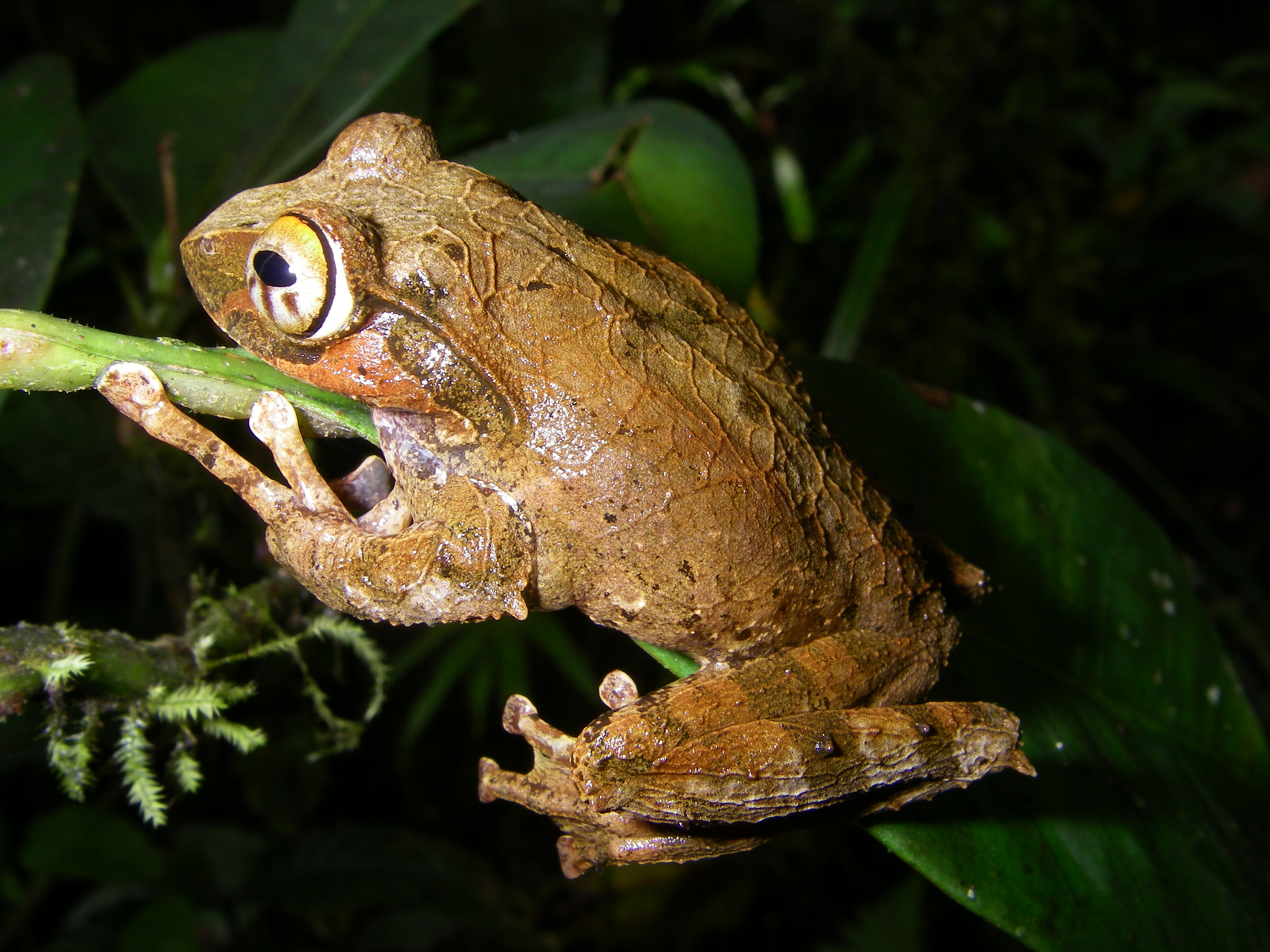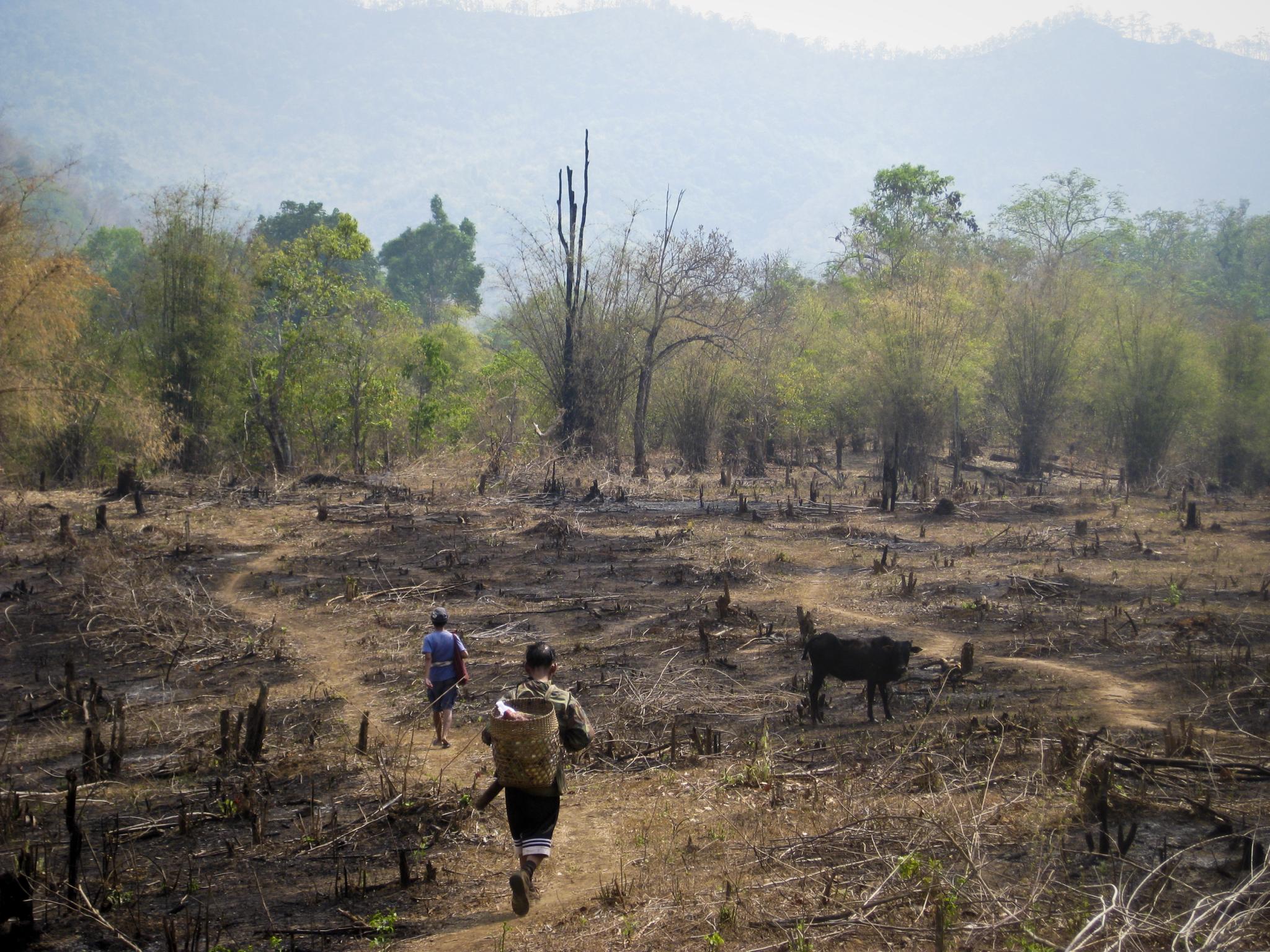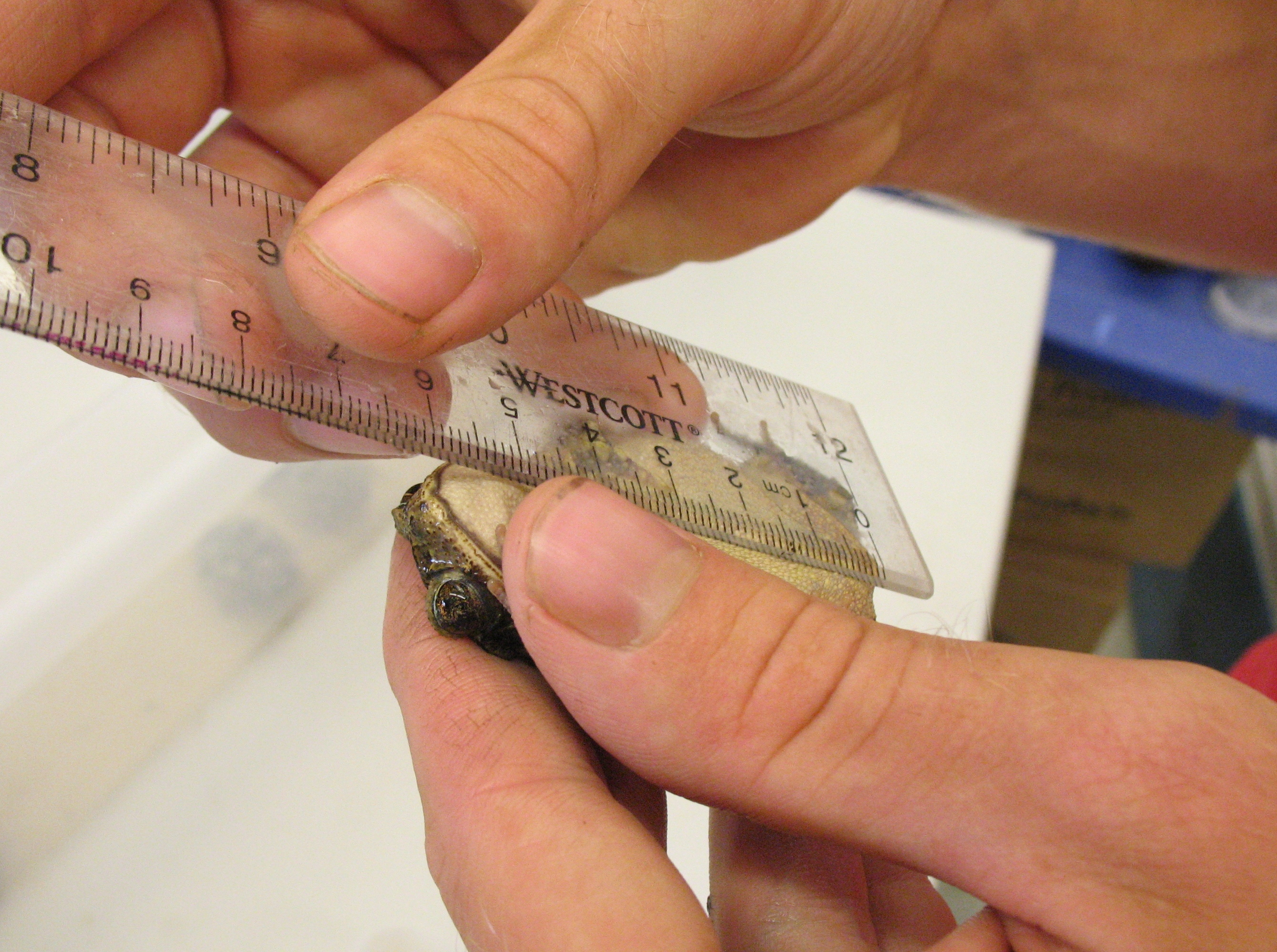|
Calumma Fallax
''Calumma fallax'', the deceptive chameleon or short-nosed deceptive chameleon is a species of chameleon endemic to eastern Madagascar, where its type locality is the Ikongo forest. It was first described by François Mocquard in 1900 as ''Chamaeleon fallax'', and it was first recognized as ''Calumma fallax'' in 1986. It is a member of the Chamaeleoninae nominotypical subfamily of chameleons, and is believed to be found over an area of , although the population is unknown. Distribution and habitat ''Calumma fallax'' is endemic to eastern Madagascar, and has a type locality of the Ikongo forest, Madagascar. It can be found at a mid-altitude over an area of about , although this is not confirmed. The International Union for Conservation of Nature have classed this species as "data deficient", as not enough information on this species is available to correctly classify it. The population of this species is unknown and no population trend is known. It is found in an area where th ... [...More Info...] [...Related Items...] OR: [Wikipedia] [Google] [Baidu] |
Ranomafana National Park
Ranomafana National Park is a national park in southeastern Madagascar, in the Haute Matsiatra and Vatovavy regions. It was established as Madagascar's fourth national park in 1991 following the rediscovery of the greater bamboo lemur (''Hapalemur simus'') and the discovery of the golden bamboo lemur (''Hapalemur aureus'') by the primatologist Dr. Patricia Wright. The park protects more than 41,600 hectares (161 square miles) of tropical rainforest at elevations ranging from 800 to 1,200 m (2,645 to 3,937 ft) and is home to several rare species of plants and animals. It was later integrated into the UNESCO World Heritage Site Rainforests of the Atsinanana. The Centre ValBio research station is adjacent to the park and was created in 2003 by Stony Brook University for biodiversity research, community health and education, environmental arts, and reforestation. The park's name is derived from the Malagasy words ("hot water") due to the hot springs in the nearby town ... [...More Info...] [...Related Items...] OR: [Wikipedia] [Google] [Baidu] |
Slash-and-burn
Slash-and-burn agriculture is a form of shifting cultivation that involves the cutting and burning of plants in a forest or woodland to create a Field (agriculture), field called a swidden. The method begins by cutting down the trees and woody plants in an area. The downed vegetation, or "slash", is then left to dry, usually right before the rainiest part of the year. Then, the Biomass (ecology), biomass is burned, resulting in a nutrient-rich layer of ash which makes the Soil fertility, soil fertile, as well as temporarily eliminating weed and pest species. After about three to five years, the plot's productivity decreases due to depletion of nutrients along with weed and pest invasion, causing the farmers to abandon the field and move to a new area. The time it takes for a swidden to recover depends on the location and can be as little as five years to more than twenty years, after which the plot can be slashed and burned again, repeating the cycle. In Bangladesh and India, the ... [...More Info...] [...Related Items...] OR: [Wikipedia] [Google] [Baidu] |
Endemic Fauna Of Madagascar
Endemism is the state of a species being found only in a single defined geographic location, such as an island, state, nation, country or other defined zone; organisms that are indigenous to a place are not endemic to it if they are also found elsewhere. For example, the Cape sugarbird is found exclusively in southwestern South Africa and is therefore said to be ''endemic'' to that particular part of the world. An endemic species can also be referred to as an ''endemism'' or, in scientific literature, as an ''endemite''. Similarly, many species found in the Western ghats of India are examples of endemism. Endemism is an important concept in conservation biology for measuring biodiversity in a particular place and evaluating the risk of extinction for species. Endemism is also of interest in evolutionary biology, because it provides clues about how changes in the environment cause species to undergo range shifts (potentially expanding their range into a larger area or becomin ... [...More Info...] [...Related Items...] OR: [Wikipedia] [Google] [Baidu] |
Reptiles Of Madagascar
Reptiles, as commonly defined, are a group of tetrapods with an ectothermic metabolism and amniotic development. Living traditional reptiles comprise four orders: Testudines, Crocodilia, Squamata, and Rhynchocephalia. About 12,000 living species of reptiles are listed in the Reptile Database. The study of the traditional reptile orders, customarily in combination with the study of modern amphibians, is called herpetology. Reptiles have been subject to several conflicting taxonomic definitions. In Linnaean taxonomy, reptiles are gathered together under the class Reptilia ( ), which corresponds to common usage. Modern cladistic taxonomy regards that group as paraphyletic, since genetic and paleontological evidence has determined that birds (class Aves), as members of Dinosauria, are more closely related to living crocodilians than to other reptiles, and are thus nested among reptiles from an evolutionary perspective. Many cladistic systems therefore redefine Reptilia as a cla ... [...More Info...] [...Related Items...] OR: [Wikipedia] [Google] [Baidu] |
Calumma
''Calumma'' is a genus of chameleons, highly adapted and specialised lizards, in the Family (biology), family Chamaeleonidae. The genus is endemic to the island of Madagascar. One species, formerly known as ''Calumma tigris'' (the Seychelles tiger chameleon), was transferred to the genus ''Archaius'' in 2010, upon the discovery of its closer relation to ''Rieppeleon''—one of several genera referred to collectively as "leaf" or "pygmy" chameleons—rather than to ''Calumma''. The earliest known fossil of the genus is of ''Calumma benovskyi'', from early Miocene Kenya, showing that the genus likely originated on mainland East Africa. The genus includes one of the heaviest and longest chameleon species, the Parson's chameleon (''Calumma parsonii''). Species groups Four species groups are recognised within the genus ''Calumma'' (originally proposed by Frank Glaw, Glaw & Miguel Vences, Vences in 1994), some of which may be only phenetic, while others are phylogenetically supported: ... [...More Info...] [...Related Items...] OR: [Wikipedia] [Google] [Baidu] |
Snout–vent Length
Snout–vent length (SVL) is a morphometric measurement taken in herpetology from the tip of the snout to the most posterior opening of the cloacal slit (vent)."direct line distance from tip of snout to posterior margin of vent" It is the most common measurement taken in herpetology, being used for all amphibians, lepidosaurs, and crocodilia Crocodilia () is an order of semiaquatic, predatory reptiles that are known as crocodilians. They first appeared during the Late Cretaceous and are the closest living relatives of birds. Crocodilians are a type of crocodylomorph pseudosuchia ...ns (for turtles, carapace length (CL) and plastral length (PL) are used instead). The SVL differs depending on whether the animal is struggling or relaxed (if alive), or various other factors if it is a preserved specimen. For fossils, an osteological correlate such as precaudal length must be used. When combined with weight and body condition, SVL can help deduce age and sex. Advantag ... [...More Info...] [...Related Items...] OR: [Wikipedia] [Google] [Baidu] |
Franz Werner
Franz Josef Maria Werner (15 August 1867 in Vienna – 28 February 1939 in Vienna) was an Austrian zoologist and explorer. Specializing as a herpetologist and entomologist, Werner described numerous species and other taxa of frogs, snakes, insects, and other organisms. His father introduced him at age six to reptiles and amphibians. A brilliant student, he corresponded often with George Albert Boulenger (1858–1937) and Oskar Boettger (1844–1910) who encouraged his studies with these animals. Werner obtained his doctorate in Vienna in 1890 and then after spending a year in Leipzig, began to teach at the Vienna Institute of Zoology. In 1919, he became tenured as a professor, maintaining this title until his retirement in 1933. Although working close to the Vienna Natural History Museum, he could not use their herpetological collections, after the death of its director, Franz Steindachner (1834–1919), who did not like Werner, and had barred him from accessing the collection ... [...More Info...] [...Related Items...] OR: [Wikipedia] [Google] [Baidu] |
Logging
Logging is the process of cutting, processing, and moving trees to a location for transport. It may include skidder, skidding, on-site processing, and loading of trees or trunk (botany), logs onto logging truck, trucksSociety of American Foresters, 1998. Dictionary of Forestry. or flatcar#Skeleton car, skeleton cars. In forestry, the term logging is sometimes used narrowly to describe the logistics of moving wood from the stump to somewhere outside the forest, usually a sawmill or a lumber yard. In common usage, however, the term may cover a range of forestry or silviculture activities. Logging is the beginning of a supply chain that provides raw material for many products societies worldwide use for housing, construction, energy, and consumer paper products. Logging systems are a ... [...More Info...] [...Related Items...] OR: [Wikipedia] [Google] [Baidu] |
Data Deficient
A data deficient (DD) species is one which has been categorized by the International Union for Conservation of Nature (IUCN) as offering insufficient information for a proper assessment of conservation status to be made. This does not necessarily indicate that the species has not been extensively studied, but it usually indicates that little or no information is available on the abundance and distribution of the species. It can also indicate uncertainty about the taxonomic classification of an organism; for example, the IUCN classifies the orca as "data deficient" because of the likelihood that two or more types of the whale are separate species. The IUCN recommends that care be taken to avoid classing species as "data deficient" when the absence of records may indicate dangerously low abundance: "If the range of a taxon is suspected to be relatively circumscribed, if a considerable period of time has elapsed since the last record of the taxon, threatened status may well be ju ... [...More Info...] [...Related Items...] OR: [Wikipedia] [Google] [Baidu] |
François Mocquard
François Mocquard (27 October 1834 – 19 March 1917) was a French herpetologist born in Leffond, Haute-Saône. In 1860 he was named ''préparateur du physique'' after receiving his Bachelor of Science degree at the Faculty of Besançon. Subsequently, he earned degrees in physical sciences (1862), mathematical sciences (1865) and medicine (1873). Despite being middle-aged, he made a career change, and began studying natural sciences in the laboratory of Alphonse Milne-Edwards (1835-1900) at the Muséum national d'histoire naturelle in Paris. In 1884 he earned his doctorate of sciences with a thesis on the structure of the stomach in crustaceans, afterwards working as an assistant in the ichthyology and herpetology department at the museum. During his career he described numerous herpetological taxa, most notably species from Madagascar, Tonkin, Borneo, Mexico and Central America. In addition, he has several species named after him, including reptiles, '' Alluaudina mocquardi'', ' ... [...More Info...] [...Related Items...] OR: [Wikipedia] [Google] [Baidu] |
International Union For Conservation Of Nature
The International Union for Conservation of Nature (IUCN) is an international organization working in the field of nature conservation and sustainable use of natural resources. Founded in 1948, IUCN has become the global authority on the status of the natural world and the measures needed to safeguard it. It is involved in data gathering and analysis, research, field projects, advocacy, and education. IUCN's mission is to "influence, encourage and assist societies throughout the world to conserve nature and to ensure that any use of natural resources is equitable and ecologically sustainable". Over the past decades, IUCN has widened its focus beyond conservation ecology and now incorporates issues related to sustainable development in its projects. IUCN does not itself aim to mobilize the public in support of nature conservation. It tries to influence the actions of governments, business and other stakeholders by providing information and advice and through building partners ... [...More Info...] [...Related Items...] OR: [Wikipedia] [Google] [Baidu] |
Chamaeleoninae
Chamaeleoninae is the nominotypical subfamily of chameleons (family Chamaeleonidae). The Family Chamaeleonidae was divided into two subfamilies, Brookesiinae and Chamaeleoninae, by Klaver and Böhme in 1986. Since its erection in 1986, however, the validity of this subfamily designation has been the subject of much debate, although most phylogenetic studies support the notion that the pygmy chameleons of the subfamily Brookesiinae are not a monophyletic group. While some authorities have previously preferred to use the subfamilial classification on the basis of the absence of evidence principal, these authorities later abandoned this subfamilial division, no longer recognizing any subfamilies with the family Chamaeleonidae. In 2015, however, Glaw reworked the subfamilial division by placing only the genera '' Brookesia'' and '' Palleon'' within the Brookesiinae subfamily, with all other genera being placed in Chamaeleoninae. Classification The ten previously recognised genera in ... [...More Info...] [...Related Items...] OR: [Wikipedia] [Google] [Baidu] |






